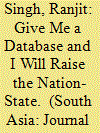| Srl | Item |
| 1 |
ID:
174399


|
|
|
|
|
| Summary/Abstract |
Using Hong Kong and Shenzhen in a comparative case study, this article addresses two important questions about digital governance: what its development sequence is, and the governance role of social media in the Chinese context. A content analysis is performed of social media communication by four sets of comparable agencies in the two cities, using the framework of e-government interconnectivity. Contrary to general expectations, our findings show that Shenzhen was more active than Hong Kong in the governmental use of social media. The results also suggest that, against the normative and sequential models, there is no strict sequence or particular order of development that must be followed in digital governance, thus rejecting the stage-by-stage "walk before you run" hypothesis. A government can "leapfrog" or "run before it walks" in its digital governance, bypassing earlier stages of development. Furthermore, the study shows that digital governance is an important tool of institutional adaptation and development to enhance a government's ability to respond to a dynamic environment of raising citizen expectations. State-led digitalization complements and compensates for the traditional and formal citizen–government interaction mechanisms, making offline and online institutions interchangeable and substitutable, and therefore also more interrelated and indistinguishable.
|
|
|
|
|
|
|
|
|
|
|
|
|
|
|
|
| 2 |
ID:
167095


|
|
|
|
|
| Summary/Abstract |
This paper draws on an ethnographic study of Aadhaar, India’s biometrics-based national identification infrastructure, to investigate how members of its design team conceptualised and understood their techno-bureaucratic enterprise of assigning unique numbers to Indian residents. Members described their work using the metaphor of building an hour-glass: the Aadhaar number and its authentication services constitute the waist of this hour-glass; below were innovations in biometric devices and above were applications requiring identity verification services. They believed the entire ecosystem sustaining Aadhaar could be controlled by prescribing interactions between the waist and the components above and below. They extended this metaphor to reimagine the Indian government as a platform of services controlling only a specific part of a service—the waist—while opening space for innovation by integrating it with other market services above and below. This paper documents the emergence of this imaginary of ‘platformised’ government collecting real-time citizen data to support personalised state–citizen interactions to unpack how the future(s) of Indian government services shapes and is shaped by it. Such future(s) constitute the Indian population as a database, bureaucracies as centralised dashboards, and government as arbiter in the circulation of citizen data.
|
|
|
|
|
|
|
|
|
|
|
|
|
|
|
|